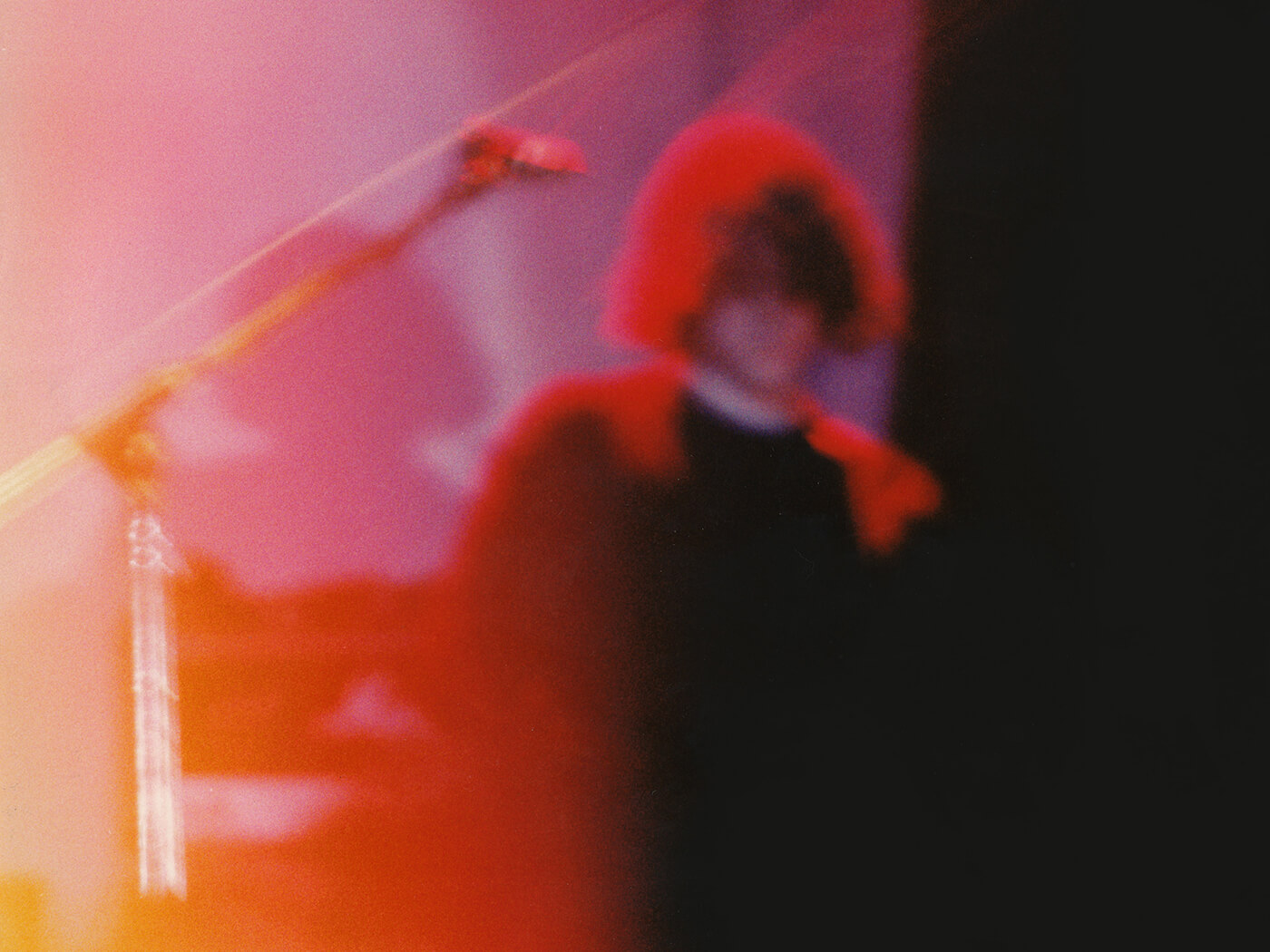Kevin Shields: Fender were the first brand to ever really ask me to do a signature pedal
The My Bloody Valentine main man became Fender’s first ever signature pedal artist last week, but despite inspiring scores of soundalike pedals, nobody ever asked him to make one before.

Image: Anna Meldal
Without Kevin Shields, it’s safe to say that the guitar world would be a much less noisy, much less esoteric and much less interesting place in 2023. The cacophonous, woozy wall of sound that My Bloody Valentine created on their seismic 1991 album Loveless still reverberates to this day – spawning an entire genre (shoegaze), being named the best album of the 1990s by Pitchfork, and appearing in innumerable best albums of all time lists across the globe.
Given how stratospherically influential Shields’ trailblazing experimentalist approach to guitar sound has been on the world at large, you’d imagine that he’s has been beating off gear companies wanting to collaborate with him for three decades before finally saying yes to Fender, who spent five years collaborating with the Irishman on the new Shields Blender limited edition fuzz pedal that was announced to a collective losing of minds last week.
The truth of it, however, is rather different. “Y’know, weirdly enough, I haven’t really had loads of offers!” he tells us, almost apologetically. “I’m trying to think – have I? Not really, no. Y’know people are weird – they’ve made pedals that are literally copying what we do, but then they don’t even contact us or anything. I guess people feel like they’d have to pay money if they do that, so maybe that’s why!
Shields has always been something of an enigma in guitar circles – a softly spoken man who made some of the most jaw-droppingly loud and arresting guitar music ever, who has spent much of the last 30 years in semi-reclusion, watching as the rest of the world slowly caught up with his genius, but never seemingly interested in getting involved in the guitar world at large.

That all changed in 2018, when Fender used the 60th Anniversary of the Jazzmaster to coax Shields into the Big F’s orbit, making a series of videos about the impact Fender’s most beloved offset had on his guitar playing life. The relationship established, Fender hit on something that had been quietly percolating in Shields’ brain for nearly 30 years.
“Fender literally said, ‘Is there anything in a pedal that you would want, that isn’t around?’ And I went, ‘Yeah! There is actually…’ because I had actually started working on this kind of idea way back in like 1994 – not with Fender, just in My Bloody Valentine tour downtime, cos’ it was something that I was interested in.
“We didn’t really get anywhere – there weren’t many ‘pedal people’ those days, and the few people that I knew [who were] didn’t really grasp what I was saying. So we tried to do it ourselves, we tried figuring out a way of doing it digitally, and just gave up after a while!”

Sagging Order
The idea was sag. Anyone who’s familiar with tube amps will know a little about sag – the woozy compression effect that occurs when the attack of your playing causes such a demand for current from the power supply, that the voltage momentarily drops, causing the signal to sag, before ramping back up to compensate (sometimes called the ‘bloom’). Shields, loves how this effect on amps, but always wanted to create something similar in pedal form, and that’s just what the Shields Blender does, creating a woozy, dreamy tremolo-like effect but much less predictable.
“There are pedals with a sag control in them – it’s not a unique idea or anything – it’s just the extremeness that I hadn’t seen,” Shields explains. “And then they said that they were planning on re-releasing the Fender Blender anyway and did I want to try that idea – basically just take the Fender Blender and do what you want with it! So I just went, ‘Oh, great! Cool – I will!”
The basics of the Shields Blender were quickly laid down – the pedal would add a pair of switches to the original circuit, allowing you to turn the octave effect on and off, and also to engage the sag, but that was very much the easy part. Talking to Shields, you are left in very little doubt that this is someone who has thought deeply about sound in a way and with an obsession that very few human beings ever have. As such, nailing the sag sound itself took the best part of five years.
“It was a long process, but it was fun, kinda,” he explains. “First of all there was the phenomenon of ‘Here’s a max amount of things you can fit into this pedal…’ So I was like, ‘Okay, so what can I do? What can we put in?’ Then it was just about honing in on the sag effect. Everything else was quite easy, really, but the sag thing took a while to get there.

“I mean I’ve got pedals that have that effect, but it tends to be very subtle in the way it’s done. This is done in a really different way, and it sounds really different as well. It creates movement, y’know – a lot of movement – but the most cool thing about it is that it’s touch sensitive. And because the trigger thing is very controllable, and the amount of the sag effect is very controllable, you can set it so that it’s barely working, but then when you play a bit harder, it affects it more. So it encourages you to be more dynamic in your playing, weirdly enough. Normally fuzzes are a bit like the opposite – this noisy thing you can play any way and it sounds kinda good because it’s loads of noise – sometimes the worse you play the better it sounds! Even with brilliant guitar players, they do that – when they’re really freaking out they kinda purposefully make it really messy?
“This pedal isn’t really like that. Even though it’s very extreme on one level, because it’s very touch sensitive – it’s a bit like a compressor, y’know? When you’re hitting a compressor or hitting a noise gate depending on how hard you play.

The main thing about it, is that it’s also capable of being really, really subtle – and, it really responds to that subtlety, and you really notice it. If you set it up with the sag only working a little bit, it’s not the most noticeable, but then you take it off and everything sounds a bit flat and then you go, ‘Oh wow’ – there’s a dimensionality there you suddenly miss
I’m curious to see how people react to that, because on the one hand it is a kind of crazy noise making peda –, yeah that can do all that y’know – but I actually think it really excels as something more subtle.
“It can sound like mayhem but you can also have it so you can turn it on and off, and you’re not 100 per cent sure what the difference is, but then when you realise, it feels very different.”

Don’t Get That Algorithm
If you get the sense that Shields has thought about all this a lot, it’s because he clearly has – from the very start he’s been a truly individual guitar player, exacting and meticulous in every aspect of his recorded sound and a virtuoso at using the studio in interesting and trailblazing ways to make his guitar sound like anything but. Despite inspiring countless pedals aiming to ‘capture the sound’, much of wonderful washes of sound on Loveless were created using minimal or no effects – instead relying on careful and innovative mic placement, amps cranked to the very max and liberal use of the Jazzmaster’s tremolo.
It turns out that part of the reason for this was a friendship Shields struck up with the legendary effects maker Roger Mayer during the album’s famously marathon recording sessions, and a very unconventional theory the engineer espoused.
“During Loveless, that’s when I met Roger Mayer, and he was a great ally or person to have met at that time,” Shields reflects. “Not so much because of the pedals he made, or anything like that so much, but just the stuff he was saying and his attitude. Obviously he was talking an awful lot about Jimi Hendrix and all those journeys he went on with him and stuff like that.
“Then there was one wonderful conversation we had. He was talking about keyboards, and he was saying that when all the first digital keyboards came out, they were able to do so many crazy different sounds, but all the programming nuts and all the real keyboard-heads were able to listen to something on the radio, and through the mix and the radio compression and all that shit, still able to go, ‘Oh that’s a DX7!’ Like it doesn’t matter how you programmed it or manipulated it, they could still recognise that it was a sound made by a certain keyboard.

“And the reason, Roger said, that they could identify this, is because every digital thing has an algorithm that it uses to produce the sound, right? And that algorithm overshadows everything. Now, most people can’t consciously identify the algorithms that are being used to make digital sounds, but his theory was that subconsciously, we pick up on it quite quickly – and we start to recongnise it, without realising. There’s a part of our brain that goes, ‘Oh okay, I know what that is’.
“And when you relate that back to nature, over the millions of years of our evolution as mammals we have this part of our brain that’s dedicated to picking out sounds and stimuli that are different – and we go on alert when that happens, when we hear something that’s different to anything we’ve heard before. It’s like a little alarm goes off and says, ‘Oh, that’s not a thing I’m used to hearing’.
“And so the concept is that when you’re hearing an effects unit, because it’s got this algorithm that it’s using to create the sound, no matter how you program it, some part of your brain is always going to know that it’s just ‘that thing’. Apparently the more digital they are, the more easy they are to latch onto. That’s why you can create any crazy sound nowadays, and part of your brain just goes, ‘Alright, I know this’ and then that’s it. You can go through 50 different sounds but part of your brain is just going, ‘Yep, that’s still that’.
“It means, strangely, that people can make more interesting sounds, but they get accepted more? It sounds counterintuitive, but sometimes people listen to music, and what they wanna hear is something that makes them feel safe and warm and comfortable. Their brain goes, ‘Okay, nothing strange is happening here, it’s all good’ – even though, superficially, it sounds quite exciting.
“So part of my philosophy, or a notion that got in my head really, was just that – even though I loved all these flanging effects from the 80s and stuff – I didn’t wanna repeat that, particularly. I was after something different when I was creating sounds, because they weren’t coming primarily from an effects unit. And I think it meant that when people listened to us, they were hearing something that was different but they weren’t able to pick out what it was, because there wasn’t actually an algorithm that was so easy to latch onto.
“Even when I did use an effect on Loveless, which was reverse reverb, I always recorded it through an amplifier, and even though it seemed counterintuitive, I would make sure that I was recording was in an extremely dry space, with no ambience or whatsoever – even though you’re recording ambience in a way. But that meant that I got the speaker break-up and that would be dry, but the sound is very wet. And because it’s an original sound you don’t get a sense of it being delay or echo – it’s 100 per cent just the effect. And then because it’s going through an amplifier, it recorded as dry as possible, you get this juxtaposed quality where it sounds both close and big?
“It’s not just the same effect as just going direct – even if I used the same settings without going through the amplifier, it would just sound like an effect to me. And at the time, I completely dismissed it as a possibility, like there’s no way I’m doing that.
“But then, very quickly a lot of shoe-gazing bands did that very thing! But they didn’t even use the reverse reverb – none of them! They just used reverb, and tons of it. And it was cool, but it was… well it wasn’t the antithesis exactly, but it was very much not what I was about.
I was looking for more of this juxtaposition, where there’s more than just one thing going on. I personally just think that it allows your brain to get into it more, and it becomes more part of your own imagination.”
If you feel the need to go and sit in a dark room and fully process what you’ve just heard, well you’re not alone, and we just about manage to pull our brain back together to ask Kevin a final and perhaps obvious question – with the first signature Fender pedal ever under his belt, does Kevin have any interest in making up for lost time and producing any more signature gear in the future?
“It’s… I don’t know?” he says wistfully. “Maybe? Maybe. It’s not out of the question, that’s for sure. We weren’t thinking about it before, but saying it out loud… maybe? Maybe the Loveless Jazzmaster or something – I mean, I wouldn’t mind one!”
Find out more about the Shields Blender at Fender and Reverb.
